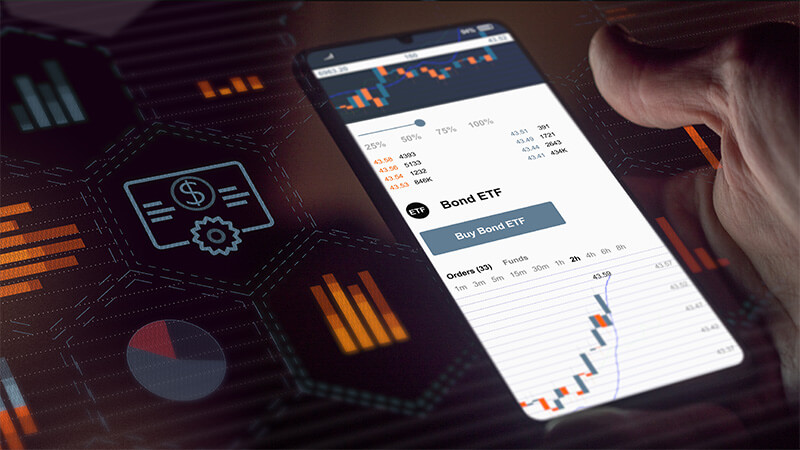This website uses cookies. By continuing to browse the site, you are agreeing to our use of cookies
Blockchain 101 – The Next Big Shift in Technology – Part-2
Financial Services
May 30, 2017
Part 2
(This the second blog in series of a 4 part essay on Blockchain 101. For the previous article, please click here.)
Enter Blockchain
Post financial crisis of 2008, Satoshi Nakamoto, the founder and creator of Bitcoin, conceptualized the first Blockchain on a paper, which went on to become the core foundation of Bitcoin, a digital cryptocurrency, the following year.
A Blockchain is a distributed database that maintains a continuously growing list of ordered records called blocks. Each block contains a timestamp, a link to the previous block and transaction information. By design, Blockchains are inherently resistant to any external modification. The data once recorded in a block cannot be altered retroactively.
Blockchain offers a unique way of transactions between two parties and enables an ‘internet of value’ by its following properties:
- Open: All transaction information from the inception of the Blockchain is visible to every node (computer) on the network
- Distributed: All nodes on the network has the same copy of Blockchain on their system. Instead of a central authority, all stakeholders of a Blockchain network maintain a copy of all transactions done, on the network. After a certain amount of time, a new block with transaction information is generated and is duplicated by all nodes on the network creating a single source of truth available with all stakeholders. The duration of time to generate a new block is 10 minutes for Bitcoin, but can vary for different kinds of Blockchains
- Encryption: Transactions recorded in the Blocks are permanent. They cannot be altered and only be viewed and therefore, nothing can hack into a Blockchain.
- Efficiency: The ledger itself can be programmed to trigger transactions automatically. There is no dependency on a central authority and associated extra steps to execute a transaction. For e.g. Think about valuable assets that can change hands in Shipping & Logistics industry, often brokered by banks or third party players for a fee. If you can instantly transfer money on the receipt of your consignment, without the intermediaries, processes and documentation, the Logistics industry can become one of the most lucrative industry for Blockchain applications
- Input: The only input you need to run a Blockchain is the computing power spent by nodes, a process called as mining, to record the transaction, and once the Block gets generated it gets copied on all nodes including that of the miners. This input electricity, is much more economical as compared to the capital expenditure and human resources deployed by intermediaries and of course, the electricity needed to support the set-up. The motivation to render computing power for mining is based on rewards designed in the system. For Bitcoin, 12.5 Bitcoins are generated and shared with miners every time, a new Block is created. As time progresses, the number of reward Bitcoins will decay in number while reaching 0, and is balanced by continuously rising unit value of the To sum i.
To sum it up, Blockchain does not require powerful intermediaries to store, move, transact, exchange and manage assets. And, since almost every physical thing can be represented digitally whether money, land records, shipping consignments, votes, health records, music etc. the possibilities are infinite and beyond the scope of current digital currencies’ applications Blockchain is the native medium for value.
So, how does it work?
Let’s break down the tech. Blockchain or Bitcoin is based on 2 cryptographic techniques:
- Hashes: A Hash is a mathematical function which is,
- One way, easy to compute and impossible to reverse
- Converts string of arbitrary length to string of fixed length
- Hypersensitive: It changes its value with the slightest change in the document. It enables easy encryption
- Public/Private Key encryption:
- Public & Private keys are pairs of numbers, where one number can decrypt a string with its pair number
- Public Key is a universally published number while the other number is kept private
A party can securely send a message by encrypting with the intended recipient’s public key, which only the latter can decrypt. Or a party can digitally ‘sign’ a document by encrypting it (or more likely, its hash) with his or her private key. Anybody can then use the sender’s public key to decrypt the document, thereby confirming that only the owner of the associated private key could have sent it.
A Bitcoin, simply is a sequence of digital signatures, each certifying transfer from one pseudonymous holder to the next. Each payer signs with his or her private key, a record of transfer to the recipient’s public key. The transaction record contains a hashed summary of all the previous transactions. So, any user can check that the record of one transaction was indeed correctly hashed into the next and thus trace an unbroken series of valid transfers back to the creation of the coin. Same methodology works for any other Blockchain.
Your ownership of the asset is as good as long as you remember the Key. Many Bitcoin owners have lost their ‘Keys’ to the wallets and therefore cannot access their money anymore. So much for an anonymous decentralized secure ledger.
Sources
- TED Talk by Don Tapscott: How the blockchain is changing money and business
- BCG blog: A Strategic Perspective on Blockchain and Digital Tokens
- BCG blog: Seven Possible Killer Apps for Blockchain And Digital Tokens
- BCG blog: HOW BITCOIN WORKS
- Investopedia term definition: 51% Attack
- Bitcoincharts
- Wiki: Blockchain
Related Blogs

Generative AI in Financial Services: Transforming Goal-based Financial Planning
- Financial Services
- Generative AI

Six Frameworks for Financial Services Modernization
- Financial Services
- Generative AI

KYC Process in Wealth Management: Digitalization Benefits
- Financial Services

Composable Enterprise Model: Unlocking New Growth Opportunities in Financial Services
- Financial Services

Generative AI in Financial Services: Reshaping Business Value and Customer Journeys
- Financial Services
- Generative AI

Revolutionizing Wealth Management: The Gen AI Advantage
- Financial Services
- Generative AI

Gen AI: A Game Changer in Bond Investment through Risk Assessment
- Financial Services
- Generative AI

Transforming Asset Management: The Power of Gen AI
- Financial Services
- Generative AI

Empowering Financial Institutions in the Digital Era: How Generative AI is Reshaping Business Value and Customer Journeys
- Financial Services
- Generative AI

Ready to Pursue Opportunity?
Every outcome starts with a conversation








